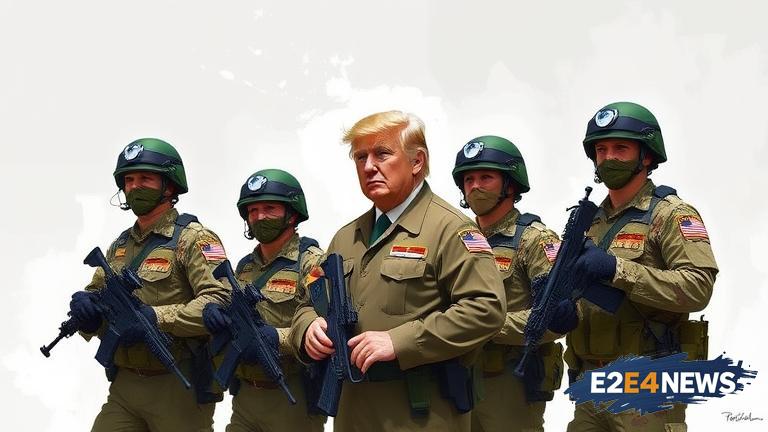In a move aimed at enhancing public safety and supporting local law enforcement, the Trump administration has established a quick reaction force consisting of out-of-state National Guard troops. This strategic deployment is designed to provide rapid response capabilities to areas requiring additional support. The decision to create this force is a response to the growing need for effective law enforcement solutions, particularly in regions experiencing heightened levels of crime and civil unrest. By leveraging the capabilities of the National Guard, the administration seeks to bolster the resources available to local law enforcement agencies, enabling them to better address the complex challenges they face. The quick reaction force will be composed of highly trained and equipped National Guard troops from various states, who will be deployed to areas of need as required. This approach allows for a flexible and adaptable response to emerging situations, ensuring that law enforcement agencies have the necessary support to maintain public order and safety. The deployment of out-of-state National Guard troops is also intended to alleviate the burden on local law enforcement resources, allowing them to focus on their core responsibilities and improve their overall effectiveness. Furthermore, the presence of National Guard troops can serve as a deterrent to potential criminal activity, contributing to a safer and more secure environment for communities. The Trump administration’s decision to create this quick reaction force reflects its commitment to supporting law enforcement and prioritizing public safety. This initiative is part of a broader effort to enhance the capabilities of law enforcement agencies and address the root causes of crime and civil unrest. By working in close collaboration with local law enforcement, the National Guard, and other stakeholders, the administration aims to develop and implement effective solutions to the complex challenges facing communities across the country. The creation of the quick reaction force has been welcomed by law enforcement agencies and community leaders, who recognize the value of having access to additional resources and support. However, some critics have raised concerns about the potential implications of deploying National Guard troops for law enforcement purposes, citing the need for careful consideration and oversight to ensure that such deployments are used judiciously and in accordance with the law. Despite these concerns, the Trump administration remains committed to its approach, emphasizing the importance of providing law enforcement agencies with the tools and resources they need to succeed. As the situation continues to evolve, it is likely that the quick reaction force will play an increasingly important role in supporting law enforcement efforts and maintaining public safety. The administration’s willingness to think creatively and develop innovative solutions to complex challenges is a testament to its dedication to prioritizing the safety and security of American communities. In the coming months, it will be important to monitor the effectiveness of the quick reaction force and assess its impact on law enforcement efforts and community safety. By doing so, policymakers and stakeholders can gain a deeper understanding of the strengths and limitations of this approach and identify opportunities for improvement and refinement. Ultimately, the creation of the quick reaction force represents a significant development in the ongoing effort to enhance public safety and support law enforcement agencies, and its potential to make a positive impact on communities across the country should not be underestimated. The Trump administration’s commitment to this initiative is a reflection of its broader commitment to prioritizing the safety and security of American communities, and it is likely that this approach will continue to evolve and adapt in response to emerging challenges and opportunities. As the national conversation about law enforcement and public safety continues to unfold, the quick reaction force is likely to remain a topic of interest and debate, with many stakeholders seeking to understand its implications and potential applications. By examining the rationale behind the creation of the quick reaction force and assessing its potential impact, it is possible to gain a deeper understanding of the complex issues at play and the ways in which policymakers and stakeholders are working to address them. The deployment of National Guard troops for law enforcement purposes is a complex issue that requires careful consideration and nuanced understanding. As the situation continues to evolve, it will be important to monitor developments and assess the effectiveness of the quick reaction force in achieving its intended objectives. By doing so, it is possible to develop a more comprehensive understanding of the ways in which this approach is being used and its potential to make a positive impact on communities across the country.
